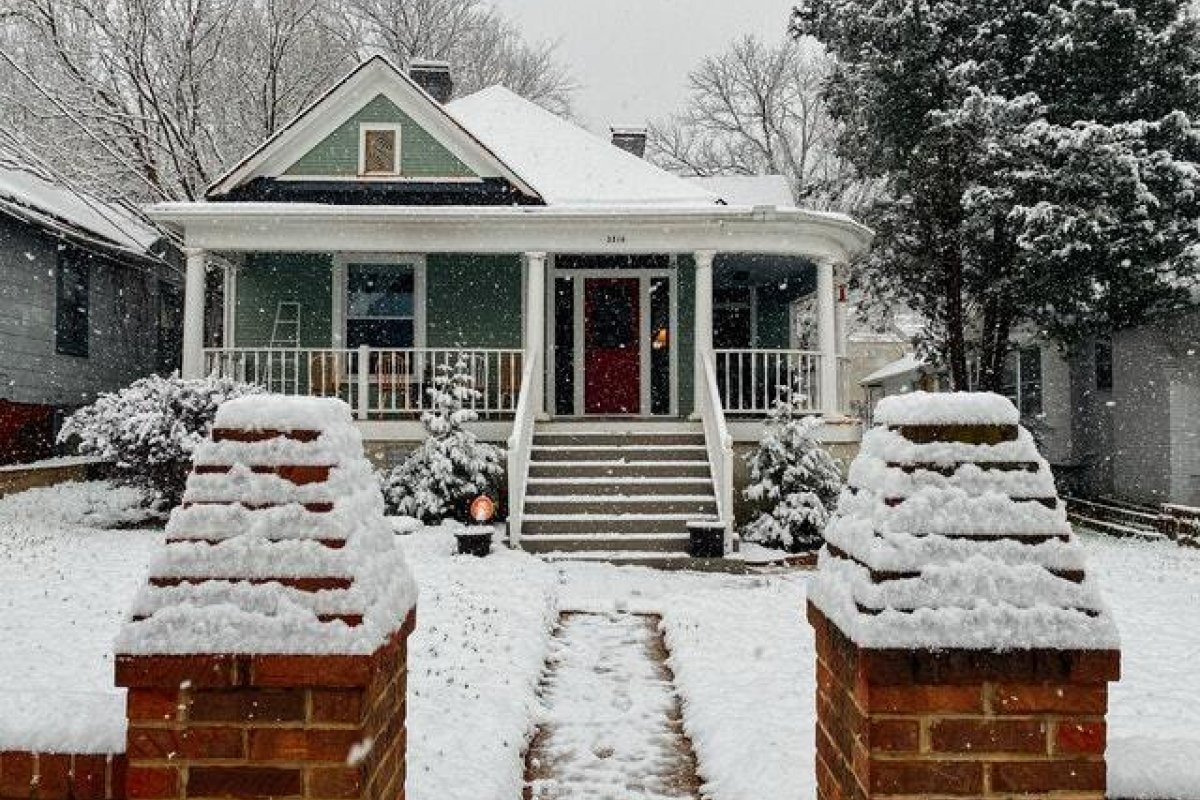Winter is coming. Are you ready?
When the temperatures begin to drop and the snow and ice start to fall, properties can take the toll and bear the brunt of the damage. There are several advantages to living in a rental property, including maintenance being the responsibility of your property management company. But there are still steps you should take to avoid disaster and property damage.

Have you inspected your rental property’s exterior lately? Whether you are in a single-family rental, townhome complex, apartment, or even a commercial space, there are things you should look for and ensure you alert your property management company.
Exterior Inspection
You can minimize water intrusion by inspecting the structure’s exterior and making the necessary repairs. These proactive measures and repairs will help reduce the chance of a bigger problem later on.
1. Caulk and seal windows
- If water is settling on the outside of windows, ensure that moisture can not enter the property.
- Look for cracking or peeling caulking to be replaced.
- Inspect the roof for missing and damaged shingles or areas that show signs of water damage.
- You can also use a drone to fly over the roof to inspect the roof for missing and damaged shingles.
2. Check rain gutters and drainage systems
- Ensure that all downspouts lead away from the building and do not send water back into the structure.
- Remove any debris that could be causing a blockage in your rain gutters.
- Check downspouts and clear any clogs and ensure they are draining away from the house.
3. Check sprinkler systems

- Make sure the sprinklers are not spraying water onto the structure or windows.
- Ensure that water is not pooling around the building’s foundation.
- Look for extra wet or mushy spots in the landscaping that could be caused by an undetected leak underground.
4. Make sure water drains away from the structure
- Water is invasive and will find its way into a structure when allowed to pool around the foundation.
- After a storm or when the ground is already saturated by rainwater, the water may enter the foundation wall through any cracks.
Interior Inspection
You can minimize water intrusion by inspecting the structure’s interior and making repairs as needed. These proactive measures and repairs will help reduce the chance of a bigger problem later on.
1. Windows
- If water is settling inside the windows, you have water intrusion that needs attention.
- Look for cracking or peeling caulking to be replaced.
- Look for staining or bubbling paint along with the window and window sill as a sign of water intrusion.
2. Ceiling
- Look for water stains on ceilings as this may be a sign of roof damage or ongoing water intrusion.
- Check ceilings for water stains on all floors of multi-story buildings as water loss can occur from a pipe break, appliance failure, or toilet leak on an above floor in a different unit.
3. Plumbing

- When temperatures drop below freezing for several days, open cabinets or doors to allow any plumbing on an exterior wall to have better airflow.
- If temperatures are below freezing for several days, when temperatures rise again, check all plumbing on exterior walls for leaks caused by ice dams.
- No matter the careful maintenance or precaution you as a renter take or even that taken by your property management company, water damage can still occur. It is essential to know what to do after water damage affects your rental property.
What to do after water damage strikes your rental property
- Turn off water if you can limit the damage.
- Evaluate safety to remain in the building and take necessary steps to ensure all are safe.
- Call your property manager to alert them of the issue.
- Call a local and trusted water mitigation specialist who is on call twenty-four hours a day, seven days a week, to assess the source of water intrusion and the extent of the damage
- Call your insurance agent to alert them about the property damage and discuss starting a claim on your renter’s insurance if any contents were damaged.
There is no way to ever eliminate all risks to property damage. But being proactive and keeping an eye out for signs of disaster and defects is a great way to minimize potential damage and disaster. If your property has signs of water damage or water intrusion, call your property management company so that they can invite a local, experienced, and trusted expert to come onsite and inspect it. For more information on what to do when water damage strikes, check out these tips from a local restoration company.
]]>
